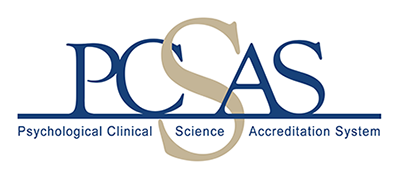by Stephanie L. Haft, B.A., University of California, Berkeley
Previous research has demonstrated that pandemics carry a heavy psychological toll. Consistent with these findings, in the context of the current COVID-19 pandemic clinical scientists are witnessing an escalation in mental health issues. This increase in both the severity and prevalence of mental health concerns is expected to extend beyond the end of the pandemic and associated restrictions. Understanding the etiology and manifestation of mental health issues related to COVID-19 can help inform the direction of current research and training efforts for clinical scientists. Recently, several scientific journals have issued expedited calls for papers on topics related to COVID-19 and mental health. The goal of the current article is to summarize some of these papers along with news reports and provide a brief overview of how factors related to COVID-19 may contribute to mental health concerns.
- The closing of schools may disrupt important coping mechanisms for children, as well as increase risk for child abuse (Lee, 2020; Van Lancker and Parolin, 2020; Golberstein et al., 2020). Unfortunately, there is comparatively less research on the mental health effects of pandemics for children compared to adults. However, the closing of schools as well as the transition to virtual schooling resulting from COVID-19 is likely to be particularly stressful for children with mental health diagnoses and special education needs. For these children, the routines of school serve as important anchors and access points for resources. In addition, with children now socially isolated at home and parents facing economic stress, the risks of child abuse, neglect, and exploitation is higher.
- The affiliation of COVID-19 with China has led to a spike in race-related stressors for Asian Americans, which may have implications for anxiety and depression (Devakumar et al., 2020; He et al., 2020; Pascoe and Smart Richman, 2009). Several news outlets have reported that the spread of coronavirus coincided with an escalation in racist and xenophobic incidents directed at Asian Americans. Separately, an extensive body of research has shown that these instances lead to heightened anxiety and depression as Asian Americans anticipate being future targets of discrimination.
- The significant loss of many aspects of life such as jobs, daily routines, a sense of safety, and of course the death of loved ones lead to increased individual and collective grief (Wallace et al., 2020). As of mid-September, over 990,000 people have died from COVID-19. The friends of family of those who have passed away will likely be processing their grief over the next few months or years. In addition, given the vast uncertainty surrounding many aspects of COVID-19, individuals may have what is termed “anticipatory grief” over anticipating future losses. Thus, there may be an increased demand for mental health care focused on processing the complex phenomenon of grief.
- Social isolation and distancing, while necessary to contain the virus, may have mental health consequences (Galea et al., 2020; Usher et al., 2020). Separation from friends and family is an unfamiliar experience, which may make individuals feel anxious and unsafe. Isolation may be especially challenging for individuals with preexisting mental health conditions, who may rely on social supports and programs that are disrupted due to COVID-19. Connection through digital technologies – while likely to alleviate feelings of loneliness – may not fully curb the mental health implications of isolation.
- Survivors of COVID-19, as well as the general public at large, are at risk for developing posttraumatic stress disorder symptoms (PTSD symptoms; Bo et al., 2020; Dutheil et al., 2020; Horesh & Brown, 2020)). A recent study of 714 COVID-19 patients in China found that the prevalence of significant posttraumatic stress symptoms upon discharge was a staggering 96.2%. Patients with COVID-19 and those healthcare workers who treat them may not be the only ones at risk for developing PTSD – social isolation and the flood of information on social media may increase the breadth of exposure to traumatic events.
- Overall, there is an increase in the number and intensity of general stressors (financial, social, and medical) that can detrimentally influence mental health without the proper supports (Brooks et al., 2020; Pfefferbaum and North, 2020).
Taken together, extant research and commentary suggest that COVID-19 may directly and indirectly cause increased prevalence of anxiety, depression, substance use, and PTSD. However, as information on mental health risk increases, so too does the availability of resources. There are a wide number of resources available concerning COVID-19 and mental health – the following are a few that offer both structural and emotional supports:
- National Alliance on Mental Illness (NAMI) Information and Resource Guide: https://www.nami.org/covid-19-guide
- Centers for Disease Control and Prevention Stress and Coping Page: https://www.cdc.gov/coronavirus/2019-ncov/daily-life-coping/managing-stress-anxiety.html
- UCSF Psychiatry compiled resources: https://psychiatry.ucsf.edu/copingresources
- Mental Health America Information and Resources: https://mhanational.org/covid19
- National Council for Behavioral Health Resources and Tools: https://www.thenationalcouncil.org/covid19/
________________________________________________________________
References
Bo, H. X., Li, W., Yang, Y., Wang, Y., Zhang, Q., Cheung, T., … & Xiang, Y. T. (2020). Posttraumatic stress symptoms and attitude toward crisis mental health services among clinically stable patients with COVID-19 in China. Psychological Medicine, 1–2.
Brooks, S. K., Webster, R. K., Smith, L. E., Woodland, L., Wessely, S., Greenberg, N., & Rubin, G. J. (2020). The psychological impact of quarantine and how to reduce it: Rapid review of the evidence. The Lancet, 395(10227), 912-920.
Devakumar, D., Shannon, G., Bhopal, S. S., & Abubakar, I. (2020). Racism and discrimination in COVID-19 responses. The Lancet, 395(10231), 1194.
Dutheil, F., Mondillon, L., & Navel, V. (2020). PTSD as the second tsunami of the SARS-Cov-2 pandemic. Psychological Medicine, 1–2.
Galea, S., Merchant, R. M., & Lurie, N. (2020). The Mental Health Consequences of COVID-19 and Physical Distancing. JAMA Internal Medicine, 180(6), 817–818.
Golberstein, E., Wen, H., & Miller, B. F. (2020). Coronavirus disease 2019 (COVID-19) and mental health for children and adolescents. JAMA pediatrics, 174(9), 819-820.
He, J., He, L., Zhou, W., Nie, X., & He, M. (2020). Discrimination and Social Exclusion in the Outbreak of COVID-19. International Journal of Environmental Research and Public Health, 17(8), 2933.
Horesh, D., & Brown, A. D. (2020). Traumatic stress in the age of COVID-19: A call to close critical gaps and adapt to new realities. Psychological Trauma: Theory, Research, Practice, and Policy, 12(4), 331-335.
Lee, J. (2020). Mental health effects of school closures during COVID-19. The Lancet Child & Adolescent Health, 4(6), 421.
Pascoe, E. A., & Smart Richman, L. (2009). Perceived discrimination and health: a meta-analytic review. Psychological bulletin, 135(4), 531.
Pfefferbaum, B., & North, C. S. (2020). Mental health and the Covid-19 pandemic. New England Journal of Medicine, 383,510-512.
Usher, K., Durkin, J., & Bhullar, N. (2020). The COVID‐19 pandemic and mental health impacts. International Journal of Mental Health Nursing, 29(3), 315-318.
Van Lancker, W., & Parolin, Z. (2020). COVID-19, school closures, and child poverty: a social crisis in the making. The Lancet Public Health, 5(5), 243-244.
Wallace, C. L., Wladkowski, S. P., Gibson, A., & White, P. (2020). Grief during the COVID-19 pandemic: Considerations for palliative care providers. Journal of Pain and Symptom Management, 60(1), 70-76.
Disclaimer: The views and opinions expressed in this newsletter are those of the authors alone and do not necessarily reflect the official policy or position of the Psychological Clinical Science Accreditation System (PCSAS).


